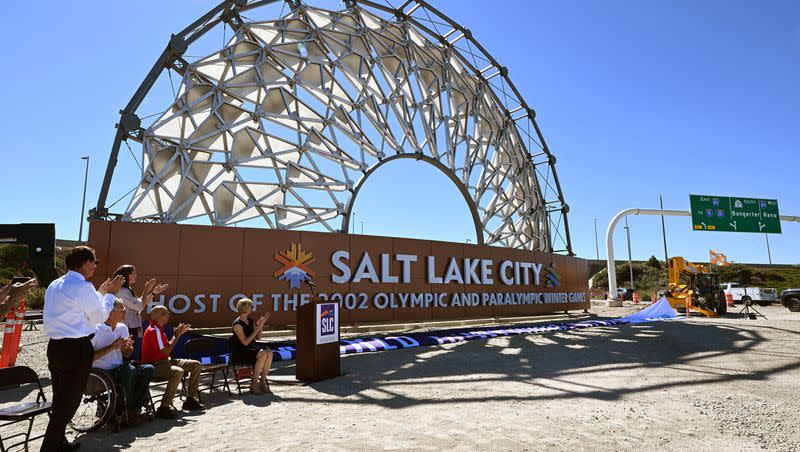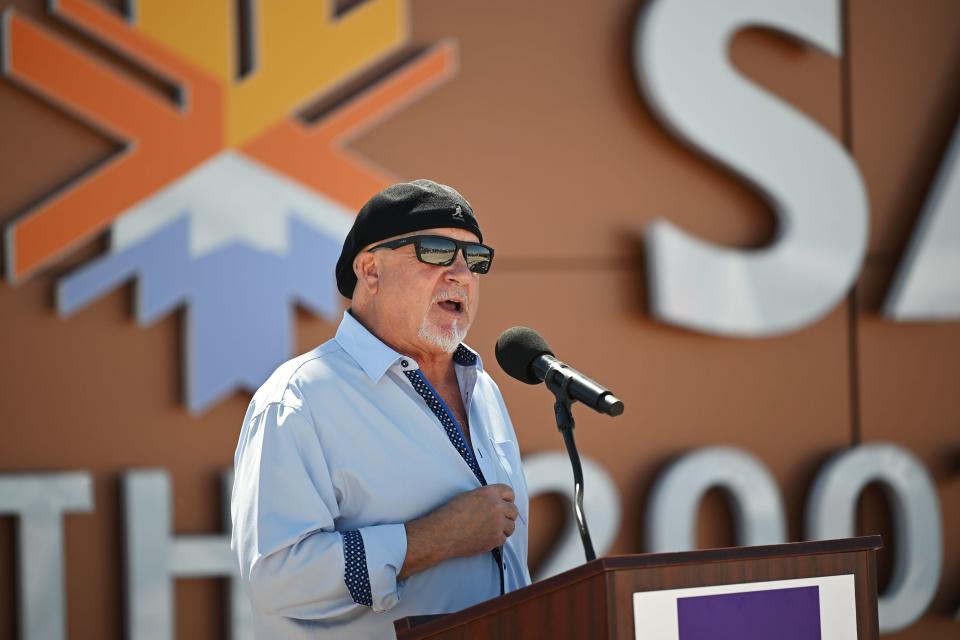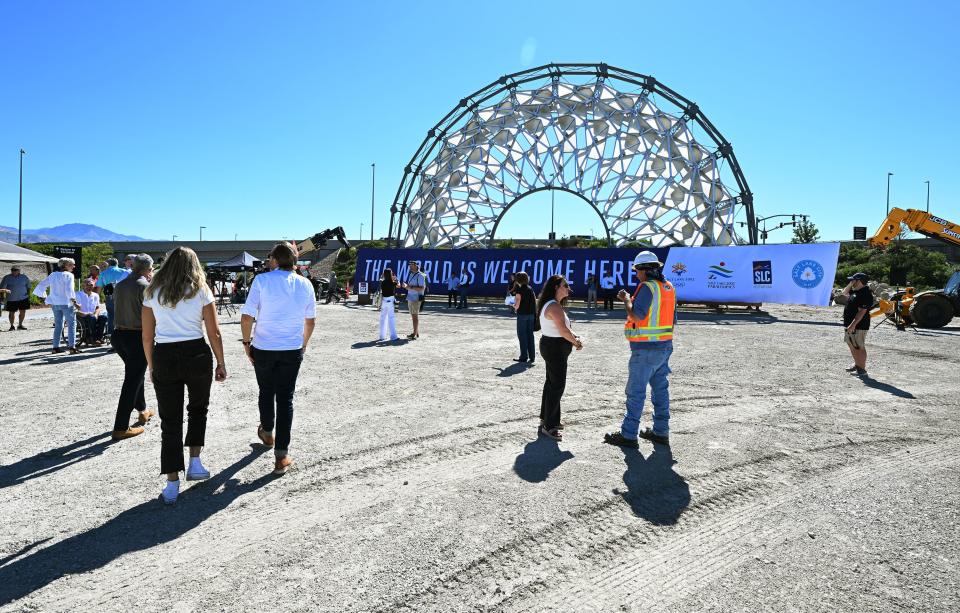Here’s the new home for an ‘iconic image’ from Utah’s 2002 Olympics

Next time you’re leaving the Salt Lake City International Airport, look closely at the 72-foot-long base of the massive Hoberman Arch from the 2002 Winter Games that was unveiled Tuesday.
See where it says “SALT LAKE CITY,” flanked by the Olympic and Paralympic Winter Games logos? The artist who restored the long-absent arch, Gordon Huether, said that’s where he deliberately left space to memorialize any future Olympics Utah might hold.
“There. And there. That’s on purpose,” Huether told the Deseret News, pointing to the pair of blank spots above where the base refers to the city as the host of the 2002 Olympic and Paralympic Winter Games.
“We designed all of the graphics as well. You had to get that just right (and) make sure you had room to add,” he said, describing the mechanical curtain used on the 2002 medals plaza stage downtown as “heavily branded.”

Not only does it mark the “when” of Utah’s Olympics, it’s also intended to be “a point to the future, the aspirations,” the artist said. Utah is bidding to host another Olympics in 2030 or 2034 and could be part of a possible rotation of future Winter Games under consideration.
Fraser Bullock, president and CEO of the Salt Lake City-Utah Committee for the Games that’s behind the bid, said the airport, rebuilt at a cost of more than $4 billion, is the “perfect home” for the arch.
Related
As some of the drivers streaming past the dusty unveiling ceremony honked their horns in apparent support, Bullock said the structure will serve as a reminder to millions of passers-by annually that Utah “hosted one of the greatest Games in history.”
He quickly added “it’s also a symbol of the hope of a future Games in the not-too-distant future.” Bullock told the Deseret News that visitors to another Olympics in Utah will be able “start with seeing an iconic image” from 2002.
There had been discussions for years about the fate of the arch, which had ended up along with the Olympic cauldron outside Rice-Eccles Stadium at the University of Utah after the Winter Games but was removed in 2014 during a stadium expansion.
The disassembled 31,000-pound structure was stored at a city impound lot, where thieves made off with a shopping cart full of some of the 4,000 pieces making up the series of 96 connected panels that opened and closed like the iris of an eye.
Huether said when he first saw the “buckets and buckets of bolts” and chopped-up parts that had been moved to a windowless downtown warehouse, he wondered, “what am I getting myself into.”
Related
The artist behind other large-scale installations at the airport, including one coming next week named “The Peaks” that’s 10 stories tall and weighs 75 tons, said the arch mechanism was not restored.
“We could have had it opening and closing, but we thought it would be a public nuisance because you have all this traffic. You want it to be beautiful and impactful for the driver, but you don’t want them to slam on the brakes to take a closer look,” Huether said.
That’s the same reason no public access to the arch was planned, even though the area surrounding it will be landscaped, he said, adding,“ what we were all concerned about is it being too successful.”

Salt Lake City Mayor Erin Mendenhall said that needs to be reconsidered.
“We didn’t plan on it, but sitting here I was like, ‘Oh my gosh, people are going to want to have a picture with this,’” the mayor said, adding she’ll talk with the artist and the airport director to see if the site can “accommodate what’s obviously going to happen.”
Olympic speedskater Derek Parra, now the sports director for the Utah Olympic Oval in Kearns, said he’d like to bring young speedskaters to the same arch where he was awarded gold and silver medals in 2002.
Related
Parra said he’d heard many stories over the years about what happened to the arch he remembered standing proudly in front of during medals ceremonies that moved him to tears.
Although there was briefly talk of installing the arch in a west side park, others had long pushed for making it part of the new airport, including Natalie Gochnour, a “clear advocate” for the arch during her eight years on the Salt Lake City International Airport Board.
“What better place than the landing pad for our state,” Gochnour, director of the U.’s Kem C. Gardner Policy Institute, said, although some wanted to see it located downtown, or had “the idea that it had had. its useful life, which I didn’t agree with.”
The arch sends a message that “the Olympic spirit lives on in Utah,” she said. “I think it’s the responsibility of those of us who experienced, that helped make the Games successful, to pass that on to this next generation.”
The $3.79 million price tag for the restoration that began some 18 months ago came entirely from money raised by the airport, not taxpayers, said Nancy Volmer, spokeswoman for the Salt Lake City Department of Airports.
The arch was designed by Chuck Hoberman, an artist, architect and engineer, and was the largest unfolding structure in the world at the time it was built. Hoberman did not attend Tuesday’s unveiling, but Mendenhall said he called it one of the highlights of his life.

